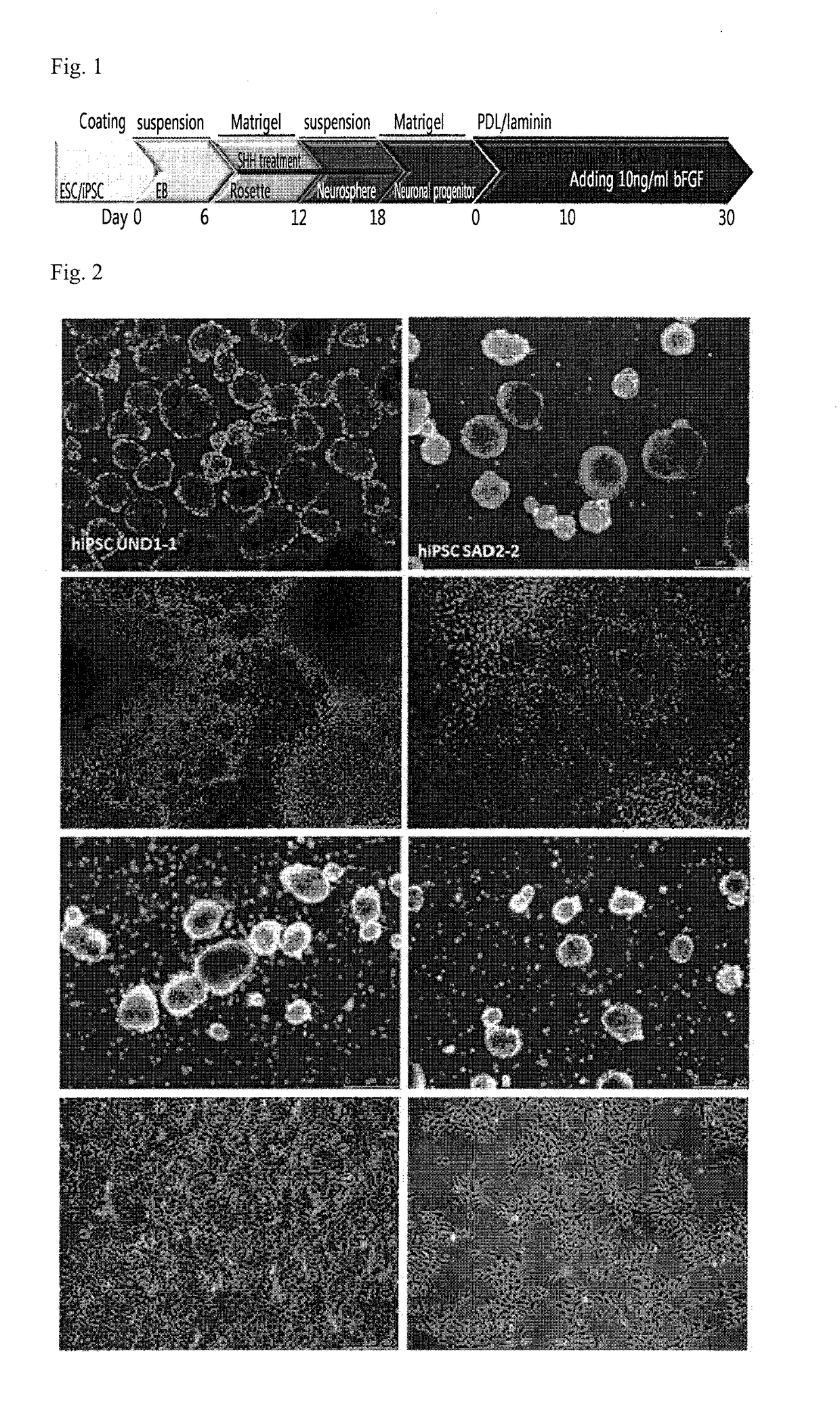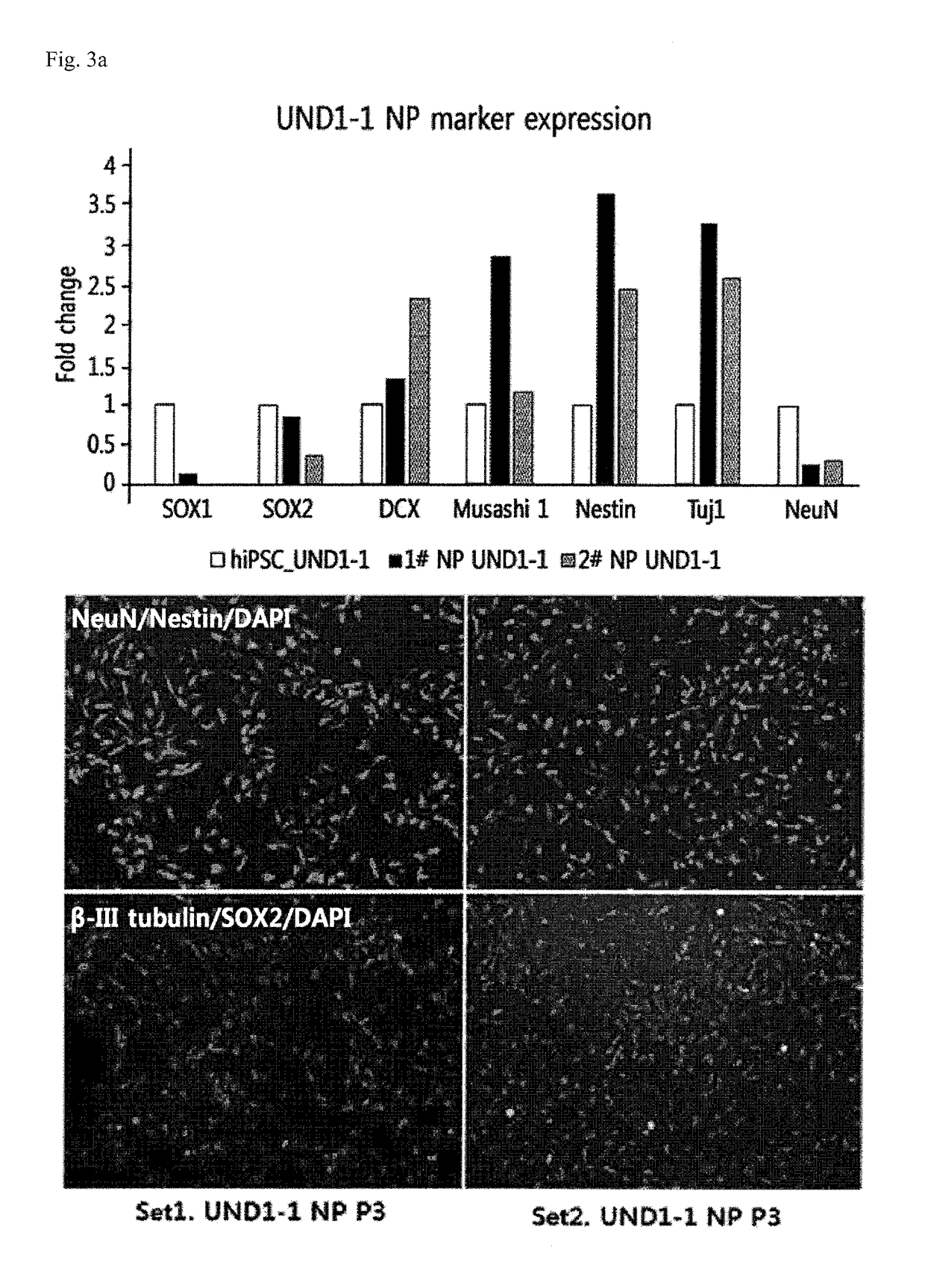Method for producing cholinergic neural cells
a cholinergic neuron and neural cell technology, applied in the field of cholinergic neuron production, can solve the problems of insufficient treatment, method has not been used universally, and cholinergic neurons cannot be directly used for treating neurodegenerative diseases, etc., to achieve rapid production of cholinergic neurons, effective treatment of degenerative diseases, and high purity
- Summary
- Abstract
- Description
- Claims
- Application Information
AI Technical Summary
Benefits of technology
Problems solved by technology
Method used
Image
Examples
example 1
of Induced Pluripotent Stem Cells (iPSC)
[0061]Each skin fibroblast (AG06263, AG06264, AG07871, and AG07926; Coriell) obtained from healthy subjects and Alzheimer's disease patients is cultured, and hOct3 / 4-p53sh, hSox-KLF4, hUl, and EBNA1 are introduced therein using Neon™ transfection system (MPK10096, Invitrogen) to obtain transformants. After saturating the obtained transformants to a level of 80%, it was inoculated into a culture dish coated with matrigel (47743-720, Corning) and subcultured to obtain induced pluripotent stem cells. The culture medium used herein was mTeSR™ 1 (05850, Stem Cell™ technologies) comprising 50 ng / mL bFGF, 3 uM CCHIR99021 (13122-1, Cayman), 0.5 uM A83-01(sc-203791, Santa Cruz), 0.2 mM sodium butyrate, and 1 mM nicotinamide. After cutting the cells saturated and cultured during the subculture, collagenase IV was treated to separate the cells.
example 2
n of Cholinergic Neurons
[0062]The cholinergic neurons were produced by differentiating each iPSC obtained in Example 1.
example 2-1
f Embryoid Bodies
[0063]After cutting the iPSCs into a size of about 150 collagenase IV was treated to separate the cells, and the separated cells were washed with DMEM / F12 (11330, Gibco). The washed iPSCs were inoculated into a culture medium for differentiation into embryoid bodies (80% DMEM / F12, 20% serum replacement, and 1% NEAA (11140-050, Gibco), 1% penicillin / streptomycin, 100 nM LDN193189 (S2618, Selleckchem), and 10 μM SB431542 (301836-41-9, ABcam)), and cultured for 4 days to 5 days to obtain the embryoid bodies.
PUM
| Property | Measurement | Unit |
|---|---|---|
| Time | aaaaa | aaaaa |
| Time | aaaaa | aaaaa |
| Time | aaaaa | aaaaa |
Abstract
Description
Claims
Application Information
 Login to View More
Login to View More - R&D
- Intellectual Property
- Life Sciences
- Materials
- Tech Scout
- Unparalleled Data Quality
- Higher Quality Content
- 60% Fewer Hallucinations
Browse by: Latest US Patents, China's latest patents, Technical Efficacy Thesaurus, Application Domain, Technology Topic, Popular Technical Reports.
© 2025 PatSnap. All rights reserved.Legal|Privacy policy|Modern Slavery Act Transparency Statement|Sitemap|About US| Contact US: help@patsnap.com



